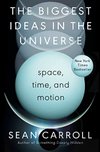
Saved by Maria Michela and
The Biggest Ideas in the Universe: Space, Time, and Motion

Saved by Maria Michela and
it takes d(d + 1)/2 functions to fully specify the line element.
Classical mechanics says, “A physical system is described by positions and momenta or appropriate generalizations thereof, and those variables obey equations given (equivalently) by Newton’s or Hamilton’s equations or the principle of least action.” It remains agnostic about what the forces are, what the specific Hamiltonian is, or what the action
... See morethree-dimensional Euclidean space in Cartesian coordinates (x, y,
In the second law, mass is a measure of inertia—the resistance that the body has to being accelerated. It’s the same quantity no matter what force is causing the acceleration. But in the law of gravity, mass measures the interaction between the body and the specific force of gravity.
Force is the rate at which momentum is changing with time.
two-dimensional sphere.
In Cartesian coordinates, the line element
There is also a symmetry according to which we can rotate the system around any of three independent axes; that gives rise to another conserved quantity: angular momentum.
To see the videos, as well as find other supplementary materials, visit: https://preposterousuniverse.com/biggestideas/